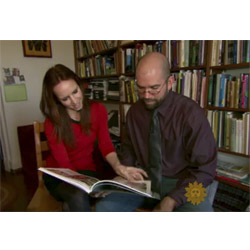
What’s on your fridge? CBS Sunday Morning explores the significance of refrigerator magnets with Professor Graesch

In a segment that opens with a woman who owns 45,000 refrigerator magnets, Anthropology Professor Anthony Graesch explains the cultural significance of the outside of the fridge to CBS Sunday Morning’s Faith Salie.
“The refrigerator space communicates a lot about what is important to the family,” says Graesch, a four-field-trained anthropologist who specializes in archaeological anthropology and urban ethnoarchaeology.
Graesch was part of a research team at UCLA that conducted an in-depth study of how people live with and among their things. A resulting book, "Life at Home in the Twenty-First Century,” co-authored by Graesch, includes an entire chapter about how families use their kitchen spaces and objects.
The research team found the families participating in the study had an average of 52 items on the fridge, such as birthday party invitations, school lunch schedules, family photos and magnets of all kinds.
“The kitchen is a truly fascinating place. This is command central of American family life, and in the kitchen is the refrigerator, this iconic object,” Graesch says. “The refrigerator is a repository of family memory and a place to schedule everything that is going on in your life. It is sort of the corporeal equivalent to Facebook and Google Calendar all wrapped into one.”
June 10, 2013
